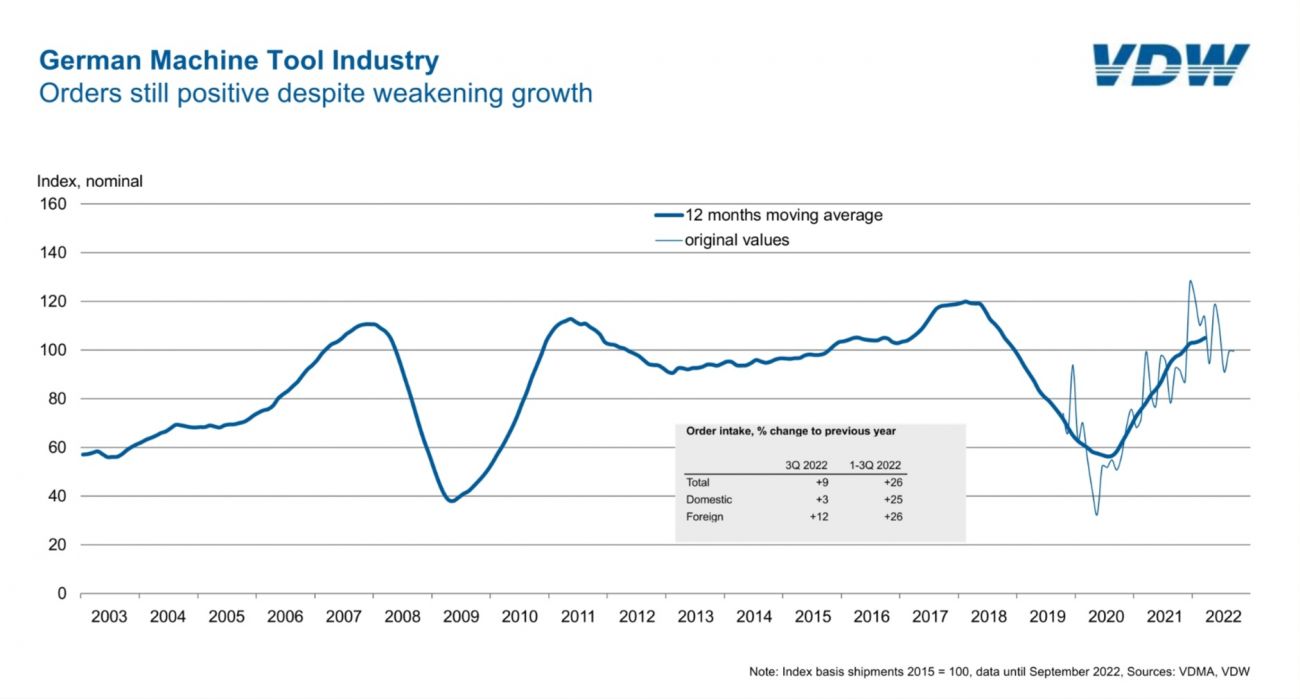German Machine Tool Orders Holding Up Well

Frankfurt am Main, Germany – The German machine tool industry received 9 percent more orders in the third quarter of 2022 than the previous year. Orders from Germany increased by 3 percent, while orders from other countries increased by 12 percent. Demand increased by 26 percent in the first nine months of 2022. Domestic and foreign orders both contributed equally, accounting for 25 and 26 percent growth, respectively.
“Our industry’s orders have held up well so far, despite all the adverse factors. Although the growth is clearly slowing, both September and the third quarter as a whole are positive,” noted Dr Wilfried Schäfer, Executive Director, VDW (German Machine Tool Builders' Association), Frankfurt am Main. “However, there was an 8 percent increase in producer prices in the machine tool industry in the third quarter. The effect of this was that earnings stagnated on a price-adjusted basis. As we are seeing everywhere, inflation is eating away at our growth.” He continued. “Orders for the year as a whole are nominally only 7 percent below the record volume posted in 2018. This record level has been matched abroad, however the figures from the domestic market are one fifth below it.”
|
Dr Wilfried Schäfer, Executive Director, VDW |
At the same time, capacity utilization in the German machine tool industry increased to a little over 90 percent in October. “The supply bottlenecks are now easing slightly, it seems,” Schäfer asserted. “This is evident from the sales, which have also increased by a gratifying 10 percent in the first nine months. Machining is the larger sector in the machine tool industry, and with its heterogeneous customer base, it is outpacing the forming sector here, posting a 17 percent increase. Forming is dominated by the pressing sector; it is often used in large-scale projects and is characterized by less prominent cyclical swings. Sales here are down 6 percent in the first three quarters of the year. However, this can be explained by the strong base from the previous year. Forming technology grew by a fifth in 2021, while for machining the figure was only 3 percent.”
Orders are expected to fall considerably in the fourth quarter, according to the sector. Germany and Europe, in particular, are trailing, while Asia and America, which have been unaffected by the oil crisis, are projected to perform better. “Nevertheless, we will finish the year with overall growth in production,” concluded Schäfer. “The sizable backlog will ensure that production remains high, as it takes time to process the orders.”
Image Source: VDW




 Facebook
Facebook.png) Twitter
Twitter Linkedin
Linkedin Subscribe
Subscribe